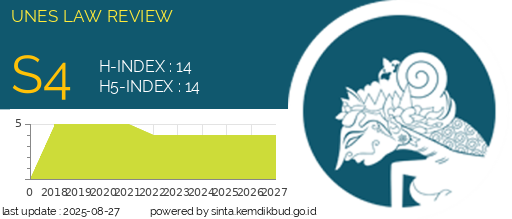PENERAPAN ILMU KRIMINALISTIK PADA PENYIDIKAN TINDAK PIDANA CABUL DENGAN KORBAN TUNA WICARA
DOI:
https://doi.org/10.31933/unesrev.v3i2.165Keywords:
Kriminalistik, Korban, Tindak Pidana Cabul, Tuna WicaraAbstract
The application of criminalism in investigating obscene crimes against speech impaired victims by the PPA Unit of the Satreskrim Polres Agam is a science to help strategies in making light of cases. Criminal science is used to obtain information from victims as crown witnesses or victim witnesses, which is rather difficult to do. This is because the daily conditions of the victim cannot hear (deaf), do not speak (mute), so they cannot communicate properly like normal people, and never go to school. In this regard, investigators use criminalistic science with forensic psychology aids, forensic medicine aids and body language or sign science for the deaf. In forensic medicine, it is used by doing visum et repertum as evidence of violence against the reproductive organs. Forensic Psychology is used to examine the victim's psyche and his honesty about what he is going through. During the investigation into the investigation, the victim was also accompanied by a teacher from the Lubuk Basung Special Elementary School (SDLB). Victims are also examined using props or pictures to make it easier for victims to remember what happened to them, because the victim's memory as a person with a mute disability has limitations.
Downloads
References
Chainur Arrasjid, Dasar-Dasar Ilmu Hukum, Sinar Grafika, Jakarta, 2000
Mahrus Ali, Dasar-Dasar Hukum Pidana, Sinar Grafika, Jakarta, 2001
Djisman Samosir, Segenggam Tentang Hukum Acara Pidana, Nuansa Aulia, Bandung, 2013
Reiter, Shunit, Diane N. Bryen, and Ifat Shachar, Adolescents with Intellectual Disabilities as Victims of Abuse.” Journal of Intellectual Disabilities Vol 11(4), 2007
Downloads
Published
How to Cite
Issue
Section
License
Hak cipta :
Penulis yang mempublikasikan manuskripnya di jurnal ini menyetujui ketentuan berikut:
- Hak cipta pada setiap artikel adalah milik penulis.
- Penulis mengakui bahwa UNES Law Review berhak menjadi yang pertama menerbitkan dengan lisensi Creative Commons Attribution 4.0 International (Attribution 4.0 International CC BY 4.0) .
- Penulis dapat mengirimkan artikel secara terpisah, mengatur distribusi non-eksklusif manuskrip yang telah diterbitkan dalam jurnal ini ke versi lain (misalnya, dikirim ke repositori institusi penulis, publikasi ke dalam buku, dll.), dengan mengakui bahwa manuskrip telah diterbitkan pertama kali di Jurnal UNES Law Review.



















